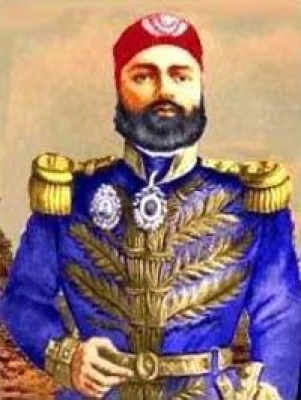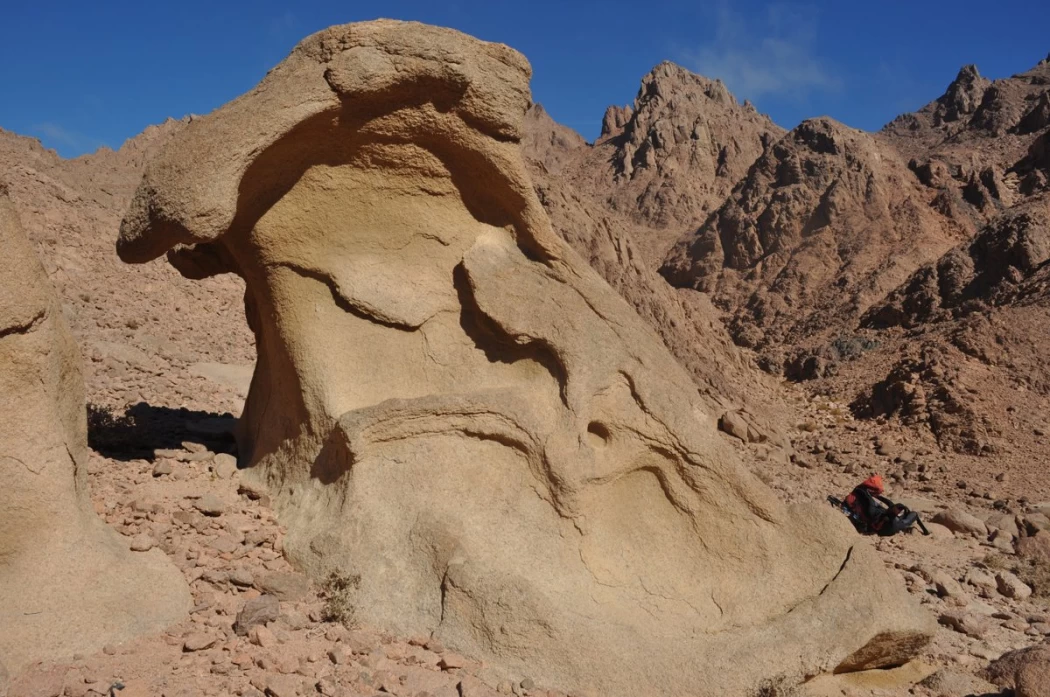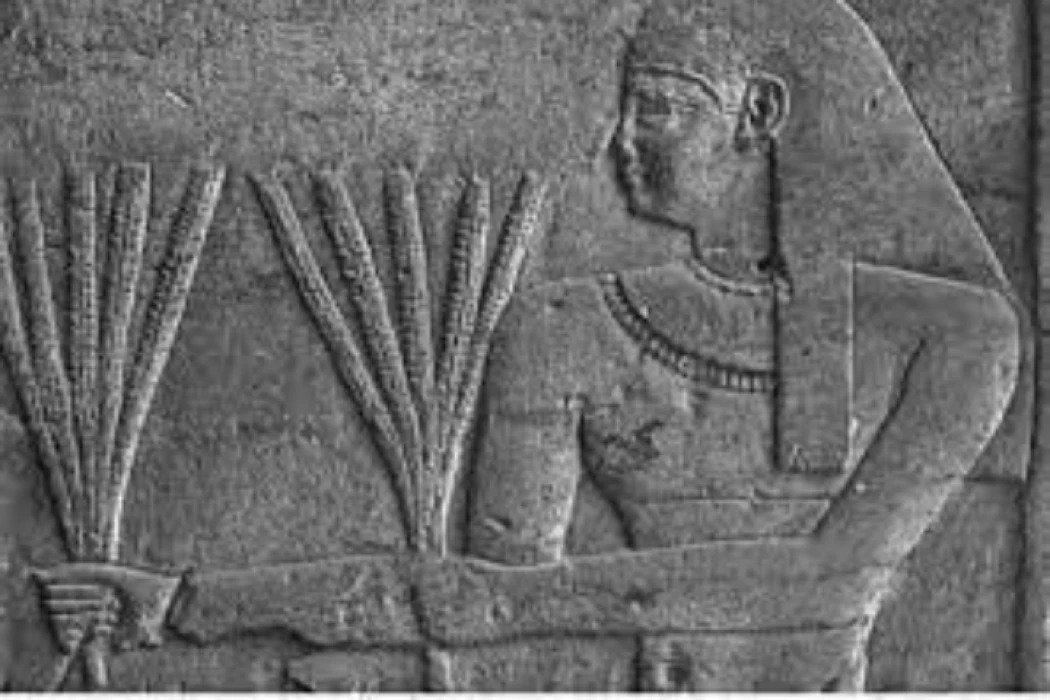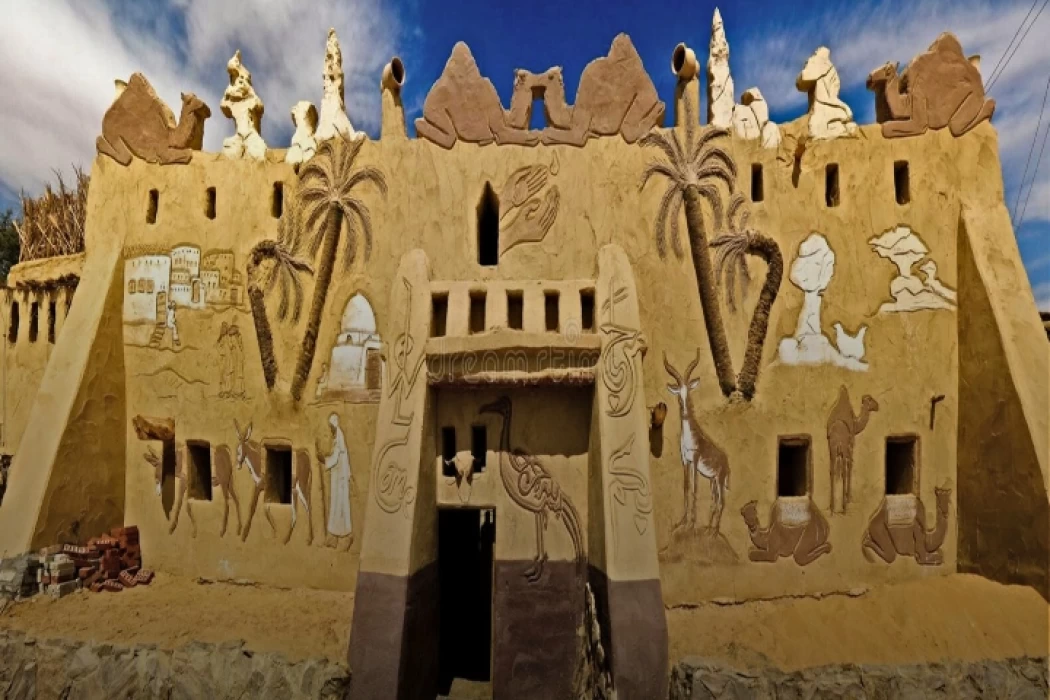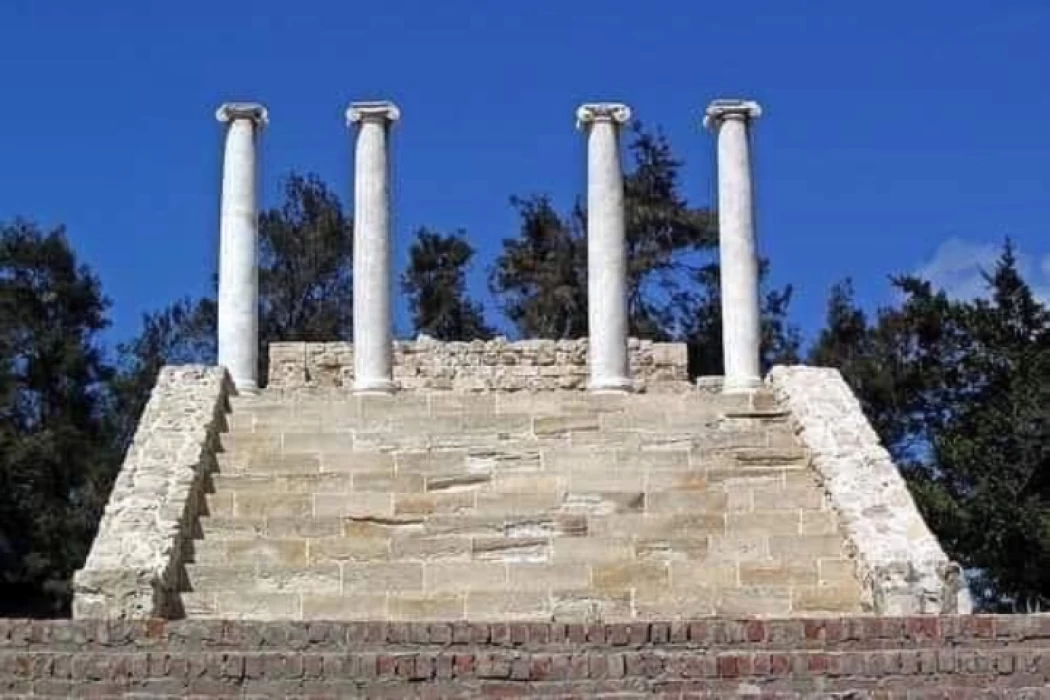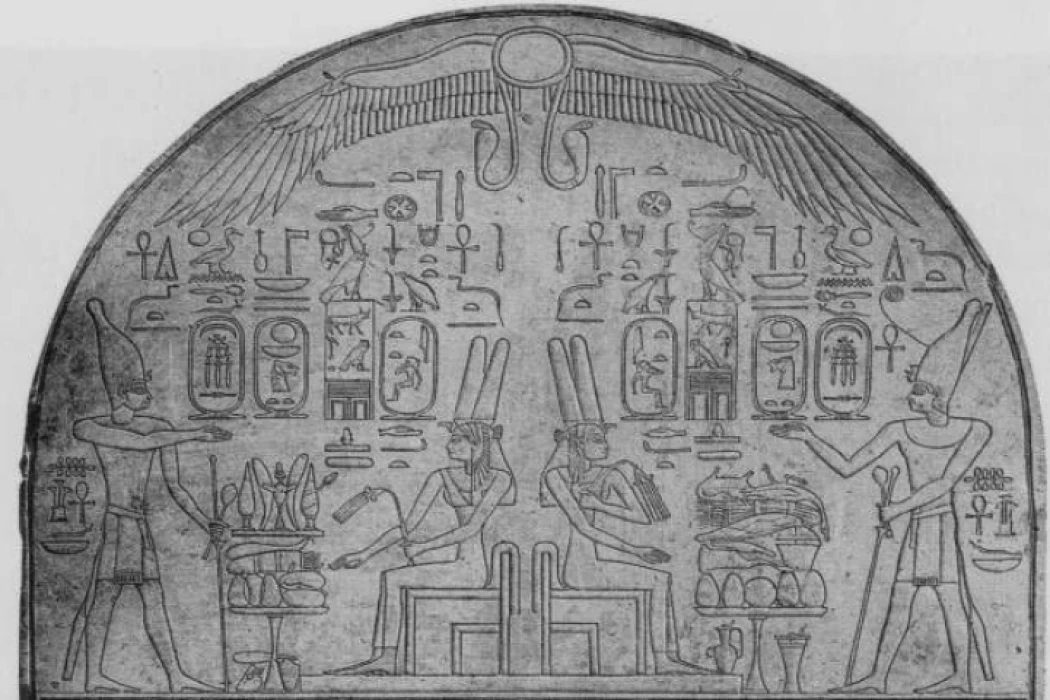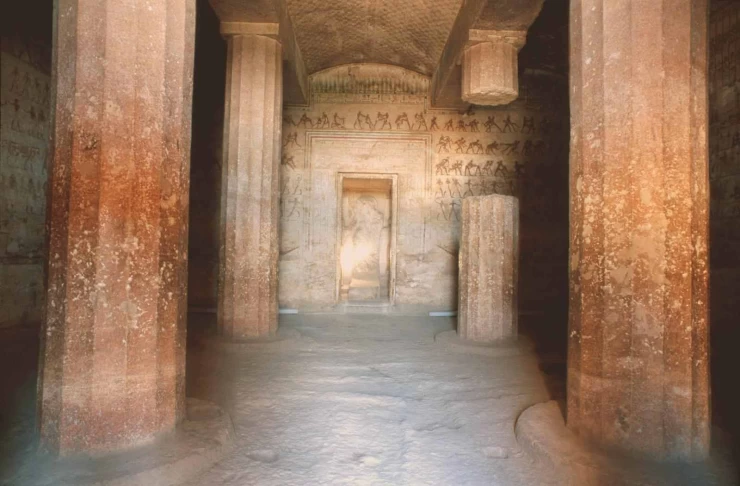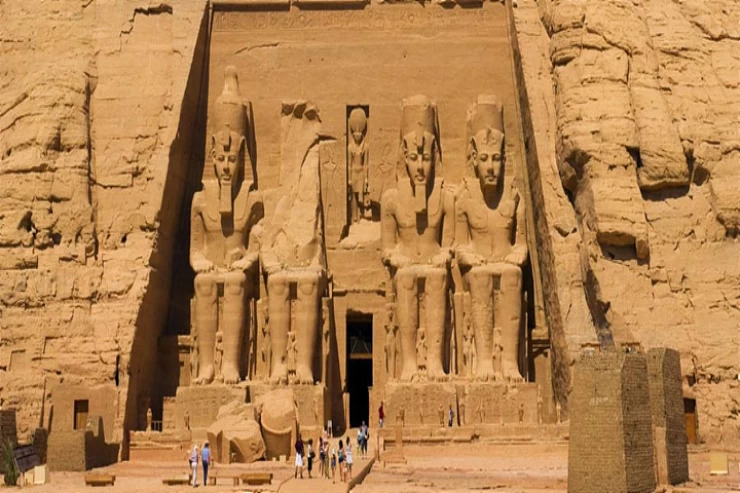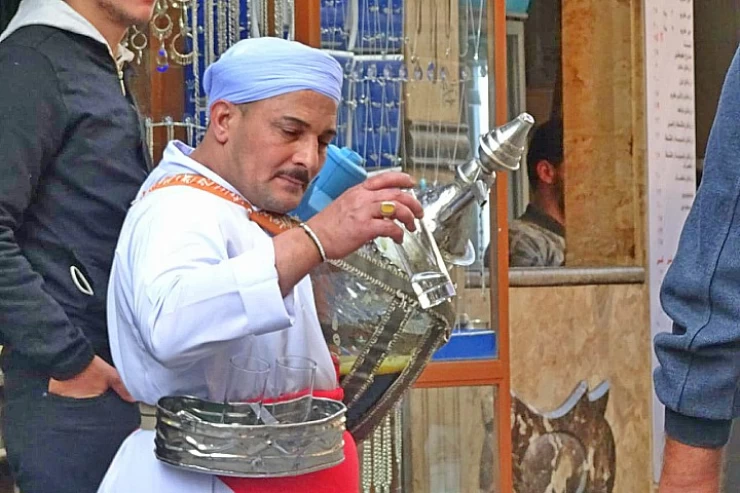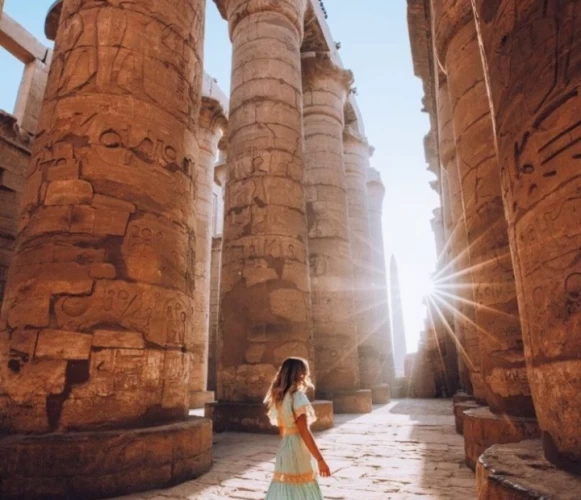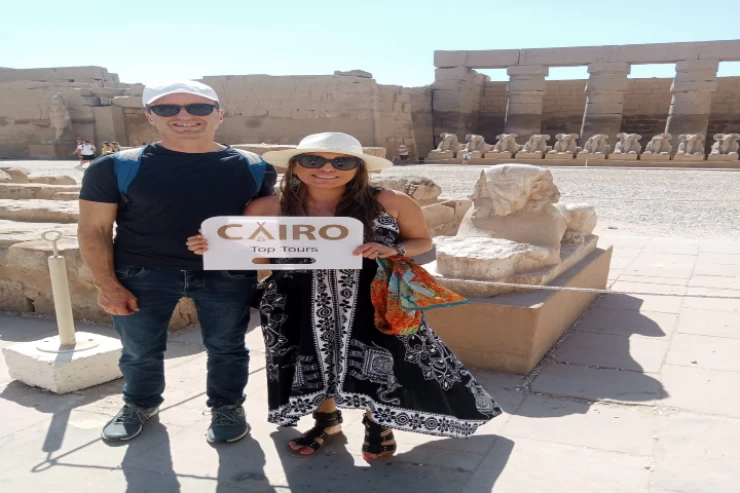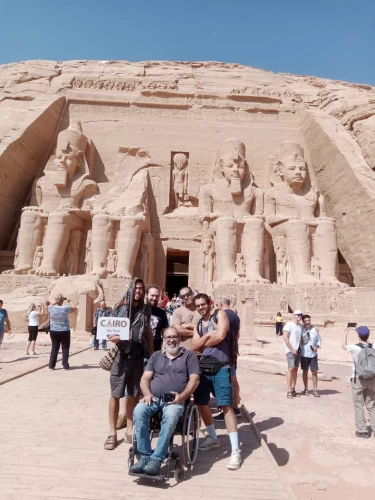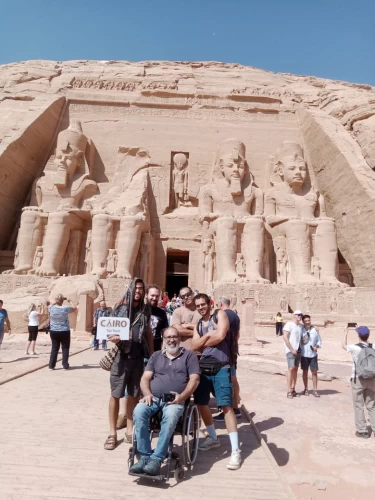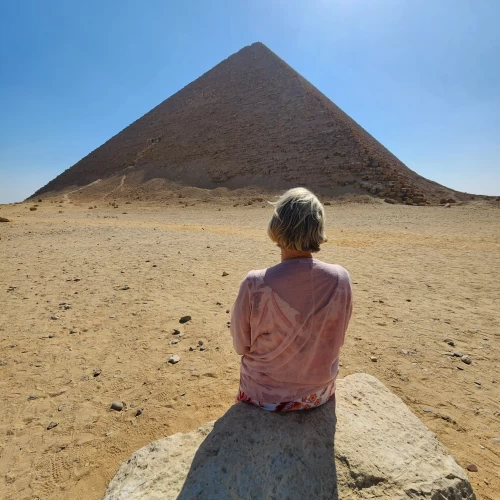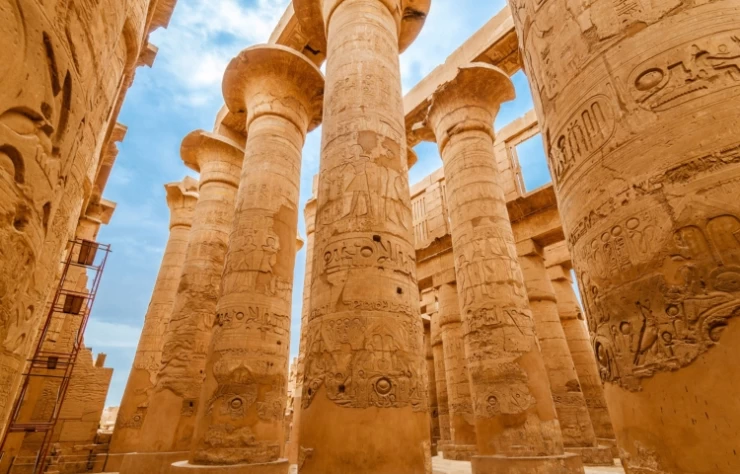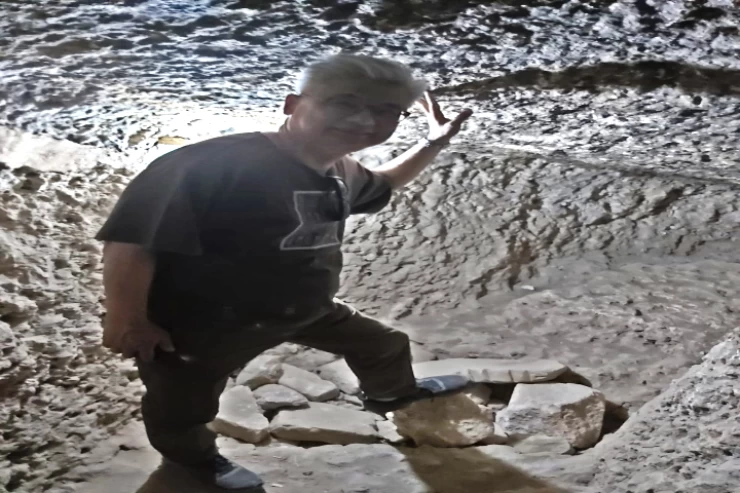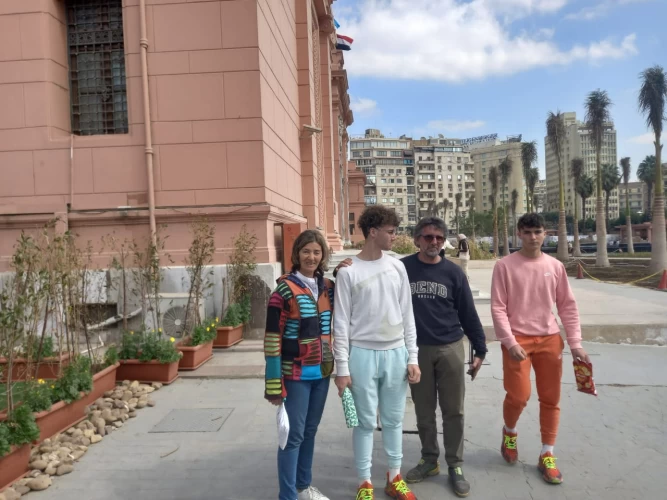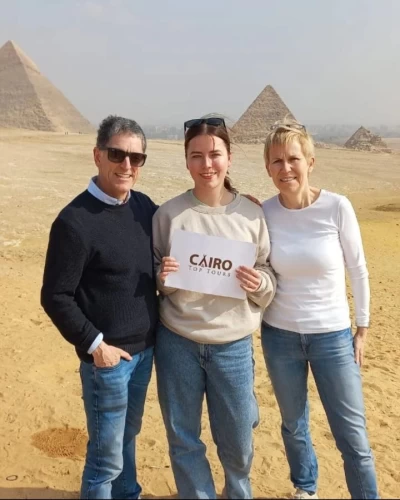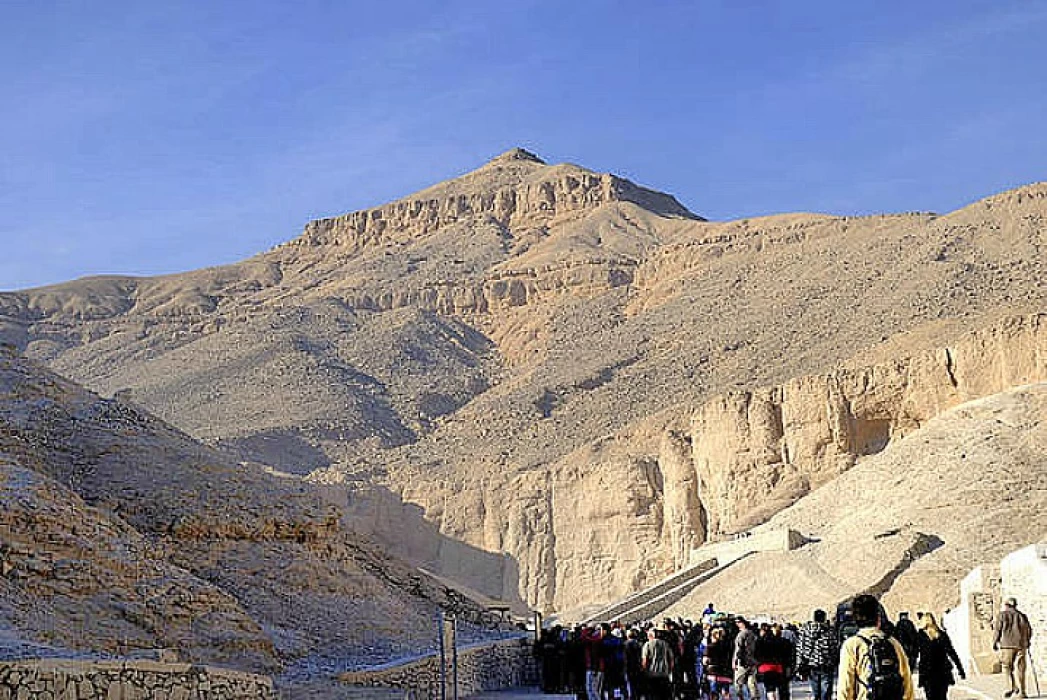
The Nobles Valley
The Valley of Nobles is Located near Luxor on the western mainland of the Nile on the West Bank of the Aswan of Egypt . are rock tombs that were for the rulers of Aswan, the fentines, statesmen, military, civilians, priests, scribes and others ,they are carved in sandstone, and date back to ancient times, from the Old Kingdom until the Roman era,these tombs have a historical significance that puts them at the forefront of the tombs in Upper Egypt, the most important of which are the two tombs (Mikho and sapni), and also gives an idea of the architectural style of the tombs, as well as the titles and functions held by the rulers of the South. The inscriptions written on the walls of these tombs have explained the role played by the princes of the south in protecting the country or making trips inside Africa.
The dead, in the pre-dynastic era, were wrapped in mats or goatskin and placed in an Oval sand pit of shallow depth. And in the hole, along with the deceased, were left earthenware vessels with food and drink, for the journey into the other world. Sand or amounts of sand were piled on top of the grave to form a small mound. Later, the tombs of the elite consisted of underground rectangular building divisions; single or multiple. These divisions were sometimes lined with bricks, to strengthen the sides, and were also covered with piles of rubble. Some of them were equipped with stairs, so that it was easy to go down to the underground rooms.
The Mastaba, a huge rectangular construction above an underground chamber, became the preferred burial structure of the nobility during the reign of the second Egyptian dynasty. The outer walls were flat, but with a slight inclination inward. The terraces had, for the most part, rooms for keeping offerings, the walls of which bore recessed or prominent carved inscriptions containing drawings or texts. And around that period, the ancient Egyptians began to put the dead inside stone or wooden coffins.
In the Third Dynasty, the brilliant architect Amenhotep began a revolution in funerary architecture: when he built a funerary set for King Djoser, from Stone as an alternative to brick and wood. The flat-topped terrace has evolved into a stepped pyramid of six rectangular terraces with gradually decreasing areas upwards, some of which were built on top of each other. With the construction of the pyramid of King Sneferu in Medom, the step pyramid developed into a real pyramid, with flat straight sides and angles inclined upwards. And Cheops, the son of Sneferu, built a larger Pyramid at Giza. Khafre built a large pyramid lower than him, next to the sculpture of the Sphinx; his son Menkaure built the third smaller Pyramid at Giza. By the end of the Old Kingdom, Giza became a city of the dead, with streets lined with small pyramids of Queens and princesses, tombs of close nobles.
The pyramids were part of a funerary complex with a valley temple and an ascending road leading to the funerary temple.the pyramids included increasingly complex systems, means and tools of closure in order to prevent the theft of what could be inside of the personal treasures of kings and Queens.
During the Middle Kingdom, the funerary architecture changed; Mentuhotep II built a huge temple on the western mountain of Thebes. And an ascending path led from the bottom of the square to the cemetery hidden deep under the belly of the Earth. A large number of high-ranking officials were buried together on the mountain in Thebes. And in the North, Kings were buried in pyramids, while courtiers were buried in tombs around.
By the time of the New Kingdom, the Kings tried to hide the tombs from robbers. He dug for King Thutmose I a huge underground cave in the valley of the Kings west of Thebes. After his death, the entrance was closed,while those who participated in the works swore to secrecy. Because the dead of successive generations were also buried in what is now the valley of the Kings, the secret was revealed, and the contents of the majority of the tombs – with the exception of Tutankhamun's tomb – were stolen.
During the Ptolemaic Period, some burial customs of the Greeks and Romans were combined with Egyptian traditions. The elite were buried in small tombs, while the common people were buried together. The tombs were marked by tombstones, some of which bore a mixture of Greek and Egyptian drawings and texts. Embalming remained popular, and tools of everyday use continued to be placed in cemeteries. Greek-style portraits of the deceased's face were placed on The Mummy instead of the ancient Egyptian mummy mask. The most famous of these photos come from the Fayoum region.
The tombs were for the rulers of the city of Aswan, and they are carved in the sandstone rock and date back to ancient times and the tombs have historical significance that puts them at the forefront of the tombs in Upper Egypt, and their importance includes the tombs of "Mikho and sabni" also give an idea of the architectural style of the tombs as well as the titles and functions held by the rulers of the South. the tombs contain rare inscriptions and drawings, including the Tomb of Amenhotep, the ruler of Aswan during the Middle Kingdom, and they also include bright colors and drawings similar to the inscriptions of Queen Nefertari in the west of Luxor.
Inside the walls of the tombs are decorated with bas-reliefs depicting scenes from everyday life, biographies of them and inscriptions in hieroglyphs telling about the trips of the nobility to Africa.the limestone in which these tombs were dug was fragile and weak, the walls were first covered with a layer of clay painted with lime and then manifested with inscriptions and colors. The northern plateaus of the West Bank abound with tombs of nobles carved into the rock from the ancient kingdom until the Roman era.
The tombs are considered one of the best Tombs after the valley of the Kings and the valley of the Queens, where the nobles come in first place after the Kings and priests. There are thousands of noble tombs, and their construction began during the reign of the eighteenth Egyptian dynasty, so due to the different times in which these tombs were built, you will find a lot of different inscriptions and drawings in terms of colors or type of drawing, inscriptions and figures of deities, which makes visiting the tombs of the nobles a real pleasure and an experience that must be done.it was discovered by security monitors of the Antiquities area in Aswan.
The views represented on the walls of the supervision tombs are divided into two parts:
The first is for funerary scenes, such as the journey of the souls of Kings who became gods with the sun machine or receiving the gods in the other world, as well as representing the deceased by approaching the king and the gods with prayers and offerings, asking them to accept him and help him enter the paradise of Osiris.
The second is related to the mundane scenes represented by the works that the deceased practiced in his early life and that he hoped to practice in the other world, such as agriculture, fishing, birds and various industries. These tombs number in the hundreds, and they are scattered in the hills of Qurna on the West Bank of Luxor.
The most important tombs located in this area are the tombs of "Nakht","Menna","rah-me-Ra","raamuza","sinofer". although these tombs are small in size compared to the tombs of the valley of the Kings, they are characterized by a variety of beautiful landscapes and inscriptions that reveal to us many ways of social life in those times, through which we learn about the life of workers and peasants. it also contains rare inscriptions and drawings, including the Tomb of Amenhotep, the ruler of Aswan during the Middle Kingdom, and it also includes bright colors and drawings similar to the inscriptions of Queen Nefertari in the west of Luxor.
Nakh-Rukh me-Ra was the private Minister of King Thutmose III and received a large amount of high positions, which allowed him to erect a tomb in the area of the tombs of the nobles.
Description of the cemetery:
When we first enter the cemetery, we have to look at the ceiling, the ceiling here is level and there are traces of the remains of colors as well as traces of soot, because this cemetery, like other places that caught fire in the era of persecution, i.e. the Christian era in general or the Christian period. The cemetery consists of:
A courtyard with an entrance leading to a transverse hall with an entrance in the wall facing the interior leads to a long hall that extended in the rock of the mountain a distance of more than 30 meters and is characterized by its ceiling, which rises gradually as the Hall extends into the hollow of the mountain, as the ceiling of this hall at its end rises to more than eight meters and the hall ends with a high compartment (niche, skylight, gap) carved in its northern wall, and it is likely that this compartment contained a statue of marble alone or with his wife, and most of the views of this compartment were blackened by the smoke caused by some of the townspeople who took this cemetery as their home at some point. The RA marble tomb is one of the rich tombs with views that we are used to and views that began to appear in that period.
The cemetery is also the scene of all the manifestations of civilization and the prosperity that Egypt reached during the reign of the greatest king of the ancient Egyptians, King Thutmose III, as he recorded on its walls many familiar scenes along with unique views. It is noted that most of the names of rakhmer were removed, probably during the reign of Akhenaten, and their work was limited to erasing the name of Amun and some other gods.
Cemetery layout:
The cemetery begins with an open courtyard, on which there is an entrance to the cemetery.
Entrance to the cemetery.
A showroom.
Longitudinal Hall "it is supposed that at the end of this salsa there should be a well leading to the burial chamber, but here we did not find any burial Wells".
The casual lounge:
Entering the casual Hall, one can see on the left of the interior a view representing the Hall of Justice, which represents the official place of Minister rakhmeir, where he performs his work in adjudicating people's cases and resolving their disputes, it is the hall where the minister sits to carry out his job functions.the Hall of justice was in the form of a large sarcophagus resting on columns with palm crowns, the legs of which were decorated with the cartouches of King Thutmose III and the name of rakhmeir, and it is striking to see in the center of this hall four there are also four rows of officials attending the minister's meetings in two rows on each side. We also see the people of grievances coming to the Central Hall to hear their statements, and outside the hall some people are seen kissing the ground out of respect for Minister rakhmeir. Then, on the same wall, there is a view representing some of the products and goods of Upper Egypt, such as gold, silver, contracts, boxes of various shapes and sizes, and livestock, small and large, in front of the owner of the Tomb, Minister rakhmer.
As for the Western Wall, there are the remains of a text that records the career of rakhmeir, the tasks of the minister and what he should do and duties towards members of the people. The rakhmira cemetery is also distinguished by the famous view recorded on the wall facing inward on the left, which represents the presentation of gifts and tributes from representatives of foreign countries to Minister rakhmira, we see the gift-givers in five rows:
The first row: represents the people of punt (currently Somalia) and presents their country's products of incense, gold, ivory, ostrich feathers, leopard skin, necklaces and various live animals, including monkey, caribou and leopard.
The second row: the people of the area of "keftio and the islands that are in the Great Green Sea" may refer to Crete and the islands of its forests, and they carry the products of this country of different shapes, sizes, purposes and types, and we see them placed in front of the writer who records them.
The third row: the gifts are presented by the people of Nubia, we see them carrying feathers, ostrich eggs, Ebony, elephant tooth, skins, in addition to live animals such as Cheetah, nasnas, giraffe, a group of cows and a group of hunting dogs.
Fourth grade: the applicants of the "Retno" region (Syria), they bring with them a cart, a horse, a bear, an elephant and some utensils of various shapes and types.
Fifth row: it may refer to some prisoners who were hostages to ensure the proper functioning of the tribes in the conquered country, including the children of the princes of the south and the children of the princes of the north, "in order to fill the factories with them and be slaves in the loss of Amun" all these gifts, products and tribute were given to rakhmer as a minister of King Thutmose III, followed by on the same wall a shattered view representing rakhmer as a minister before Thutmose III and consort.
Moving to the other half of the casual lounge, watching the scenery recorded directly to the right of the interior, we see a marble (erased) supervising the collection of Delta taxes consisting of bulls, cows and goats, in addition to gold and honey. Then there is a marble (Erased), which oversees the factories of the temple of Amun, especially the statues, so we see many royal statues, including standing, sitting, kneeling and carved in the form of the Sphinx, in addition to a set of pots, incense burners, tiles and necklaces in various forms next to a wooden bed. Next, on the same wall is a marble (erased), he supervises the ironing, carrying grain and bringing various animals, there are some peasants harvesting wheat and flax fields with their scythes, as well as a group of cows plowing the land. Then we now turn to the narrow wall and we see some members of rakhmeir's family, who most likely hope that they will remain with him in the other world as they were near him in the first World. Now we turn to the wall facing inward on the right and we see a view of a wine press, workers mashing grapes in large pots with their feet, views of birds and fish, and then views of bringing wild animals from howls, Bulls and leopards, in addition to hunting dogs. Then we follow the view where we see the remains of the hunting landscape in the desert with its animals and some birds above the Barada Lake.
The Tomb of RA Moza bears the number (TT55), it was RA Moza (in English: Ramose) holds the post of Governor of" Thebes "and minister during the reigns of both menhotep III and menhotep IV and the beginning of the reign of"Akhenaten".[3] his tomb is one of the largest tombs carved into the rock of the mountain, most likely dated to the late reign of King Amenhotep III and the beginning of the reign of Amenhotep IV, and it seems that this tomb was never used and the work on it was not finished, and it is likely that ramoza left Thebes and went to tell Amarna, where Amenhotep IV (Akhenaten) resided, as it is known that the art of the modern state grew and grew during the reign of King Amenhotep III, and his reign is considered one of the most for this reason, the tombs of Al-Ashraf in his reign are an excellent example of the splendor of Egyptian art, a tomb was exposed As a symbol of some vandalism, most likely during the reign of Hor Mahbub, during his reign, a retaliatory campaign was carried out against Aton and his followers, destroying the most beautiful inscriptions of the Tomb.
The cemetery is very important because the Tomb of this person "Ra Muza" dates back to the era of "Akhenaten", and is one of the largest and most important tombs of cowardice. Also, the Tomb of raamuza is characterized by combining two completely different periods of two kings who differed in style and doctrine, so we see on its walls the peak of prosperity that art reached during the reign of Amenhotep the furniture in terms of elegance, taste, color selection and accurate engraving, as well as we see on its walls the new art style that appeared during the reign of Amenhotep IV (Akhenaten) his instructions to ramoza by saying, "the words of RA were thrown at you by the words of my father, who taught me them," and ramoza replies to him by saying, "your traces will remain as long as the heavens remain and will last as long as I come there". The shrine of this tomb has explained the method followed by the ancient Egyptian engineer in digging, drawing, Engraving and coloring such shrines, it seems clear here that the Egyptian engineer was dividing the work in the shrine into sections, so the sculptors begin to dig and prepare the outer courtyard, then refine its facade, then sculpt the main hall and refine its walls, and when the sculptors start working in the the walls of the transverse Hall have been completely finished and others have started working on it, and we should also note here that the outer courtyard of the Tomb shrine and the facade We also note that the artists have finished painting and engraving most of the walls of this casual Hall, while the wall facing the entrance has started work on it, as evidence that the artists have painted the views with red extensions and some corrections with black extensions only, in preparation for painting or engraving and then coloring, as for the long hall, not all of its walls have been polished. It is also noted that ramuza preferred, for some reason that we do not know, it may be the lack of completion of the long hall, drawing views of the burial procession on the wall to the left of the interior to the transverse Hall. The cemetery of ramuza is characterized by its large size and the presence of four rows of cylinders bearing the roof of the transverse Hall, and each row contains eight cylinders, the crowns of which took the form of a closed papyrus flower, most of which were demolished and some of them were restored and rebuilt, while the long hall had two rows of cylinders on both sides of the axis of the cemetery, each row has four cylinders in the form of a papyrus bundle. The longitudinal hall ends with the offering chamber and is characterized by the presence of three niches (gaps)on the right and left of the Interior, most likely dedicated to the statues of the deceased, but the work was not done in this long hall as I explained before, and the reason for this may be due to the fact that ramoza may have died before the completion of the cemetery or left Thebes and went to Tell el Amarna.
The casual lounge:
Watching the views of the casual hall, we see on the left of the interior a figure making offerings, followed by a group of senior employees carrying bouquets of papyrus, then there are views of some relatives and guests in front of the figures in four groups, which are distinguished by their beauty and accuracy of Engraving and indicate the ingenuity of the Egyptian artist. It is worth noting in the lower row a group of women sleeping between two groups of men carrying bouquets of papyrus and funeral furniture, and in the upper half there is a coffin inside its compartment above a boat towing on a crawler and ahead of it on a crawler is the smallest of what is known as"techno", which is the skin of an animal colored in black and Osiris, but on the Western Wall there are some unfinished scenes representing symbols standing in front of King Amenhotep IV sitting inside and behind his cabin The goddess Maat-the true God-sits and under the throne we watch the names of the peoples of the nine arches.
Upon reaching the other half of the hall, directly to the right of the interior is seen ramoza, his wife and the sacrificial bearers, then a view of three girls holding chains in front of ramoza and his wife, then the view of the purification of the statue of the deceased by the priests.at the end of the wall there is a view representing a group of priests carrying the fat and the offering in two rows in front of ramoza and his wife, his brother Amenhotep and his wife. Then you notice the scenes painted on the Western Wall, from the right he watches a figure accepting papyrus bouquets, then he receives a group of great statesmen and some foreign delegations (from Nubians, Asians and Libyans), then he watches the famous view of King Amenhotep IV with his wife Nefertiti under the rays of the Aten inside what is known as the window of the apparition and he she came to offer congratulations to ramoza, these views are"croqui" only in red and with some corrections in black. After that, the viewer arrives at the longitudinal Hall, which is dilapidated and the work from it is not finished.
The Tomb of Sharif Nakht bears the number (TT52) , "Nakht" (English: Nakht), was a clerk of stores during the reign of King "Thutmose IV" of the Eighteenth Dynasty, lived during the reign of Thutmose III and Thutmose IV and was responsible for the wine and grape industry, and his titles include the astrologer of Amun, writer, specialist in astronomy and a close minstrel of the god Ra. His tomb consists of an entrance leading to a transverse Hall, which in turn leads to a longitudinal Hall, ending with a niche (where the statue is located). And only the first room is the one on the walls of which there are exquisite pictures that still retain their beauty.Most of these images represent agricultural life in ancient Egypt from plowing the land, sowing and harvesting wheat, as well as views of grape picking and juicing, and winemaking. There are also views of fishing on land and at sea, views of music and dance boards.
This cemetery, which is small, is considered one of the most famous graves of the honorable people in the region because of its beautiful views with fresh colors, and its views are very similar to the views recorded on the walls of the occasional Hall in the shrine of Manna cemetery, which we talked about before. In its general form, this tomb took the architectural layout of the Sharif's tomb in the Eighteenth Dynasty, but it is noticeable that the transverse Hall in the Nakht cemetery deviated sharply from the axis of the Tomb, perhaps because of the poor quality of the rock in front of the longitudinal Hall, it is almost square and a well was dug inside it, which leads to the burial chamber.
The casual lounge:
The transverse Hall of the shrine, which is the only painted part, is seen on the entrance wall on the left, nakht and his wife pouring fragrant oils on the offerings and then supervising the agricultural work, there is a wheat Kilner, the offspring of the wheat harvest and a bundle in a net for transporting and plowing the field, and what is striking here is that old man with careless hair and with his bull leaning over the length of the plow. On the narrow wall on the left, there is an imaginary door with another view of two deities in the middle of a group of various different progressions, each goddess took the human form and was distinguished by the artist by placing a symbol of a tree above her head, perhaps to symbolize the tree gods or the goddess Nut. As for the wall facing to the left, you can see on it the remains of a view that irritates one of the banquets where guests of both sexes gather and a blind man sitting on the "harp" plays for them, while a group of girls sat behind him on the mat exchanging talking colors besides listening to the playing, below this view there is a group of men, they are enjoying the melodies of the musical band, which consists of three of the girls, the first plays the "harp", the second plays the oud and dances at the same time and the third blows the flute. He notes the models of clothes, toiletry items and perfumes placed on the heads that were liked at such parties. Then there is a view of his sister and his wife sitting in front of the offerings, and the cat sitting under a lady's chair must be observed devouring a fish thrown to him, most likely from the party tables, and the artist was able to depict him holding the fish between his paws and begins to devour it.
Moving to the other half of the casual hall, he watches the views on the entrance wall on the right, representing nakht and his wife pouring fragrant oils on the offerings and a group of offering bearers, and the view is not finished from it, but on the narrow wall on the right, the most important views of this shrine are watching men picking grapes from one of the vineyard beds (cubed) and then squeezing the grapes with their feet and we see the juice flowing from a gutter to a small basin to fill one of the workers stacked jars at the top. Below this view we see a net (trap) full of wild birds attracted from inside the papyrus and there is a man sitting cleaning the birds and another removing their feathers. Then there are two hunting scenes, one of which represents Nakht standing inside a papyrus canoe fishing with harpoons, and the other one is hunting the bird with a curved stick (boomerang) with two women, one sitting, the other standing in front of his young son holding in one hand an archery stick, the other one is one of the birds that fell while hunting. We enter the longitudinal Hall, which here is an almost square unfinished chamber, and there is a well inside that leads to the burial chamber, as we see at the end of the statue gap, and now inside this gap there is a photograph of the statue that was found inside it was a small statue of his sister kneeling holding a plate on which one of the hymns of the god Ra was recorded.the statue sank with the ship that was to transport it to England in 1915.
Latest Articles
Admin
Regin of Abbas I of Egypt | Abbas Pasha I
Abbas has been often described as a mere voluptuary, but Nubar Pasha spoke of him as a true gentleman of the "old school". He was seen as reactionary, morose and taciturn, and spent nearly all his time in his palace. He undid, as far as lay in his power, the works of his grandfather, both good and bad.
Admin
Story of Gabal Shayeb Al Banat - Red Sea Mountain
Jabal shayb al-banat is one of the Red Sea Mountains in the eastern desert in Egypt, located to the west of the city of Hurghada at a latitude of 27 degrees north and a longitude of 33.5 degrees east of the Greenwich line approximately, this mountain is the highest mountain peak in the eastern desert with a height of up to 2185 meters, it is a prominent mass of igneous rocks
Admin
Neper God Of Grain
Neper was the deity of grains, particularly cereals that were important in Ancient Egypt, such as wheat and barley. It was stated that he foretold when the crops would grow, be harvested, and disappear.
Admin
Badr Museum in Farafra
The Badr Museum is located in a mud building, which is the common home found in this medieval part of Egypt. All of the artwork that was created by the artist is quite unique. His work almost always depicts life in the Farafra Oasis and he provides the work through both painting and sculpting.
Admin
The Black Head Temple
The Black Head Temple is a small temple dedicated to the worship of the goddess Isis and was discovered in 1936, by chance, in the Black Head area, which is now located within the Mandara area of the Montazah district in Alexandria. This temple was moved from its original place to the Latin Necropolis in 1994.
Admin
The Queen Tetisheri
Tetisheri was the mother of Seqenenre Tao, Queen Ahhotep I, and possibly Kamose. For sure, she was the mother of Satdjehuty/Satibu, as attested on the rishi coffin of the latter. At Abydos, her grandson King Ahmose I erected a Stela of Queen Tetisheri to announce the construction of a pyramid and a "house" for Tetisheri.
